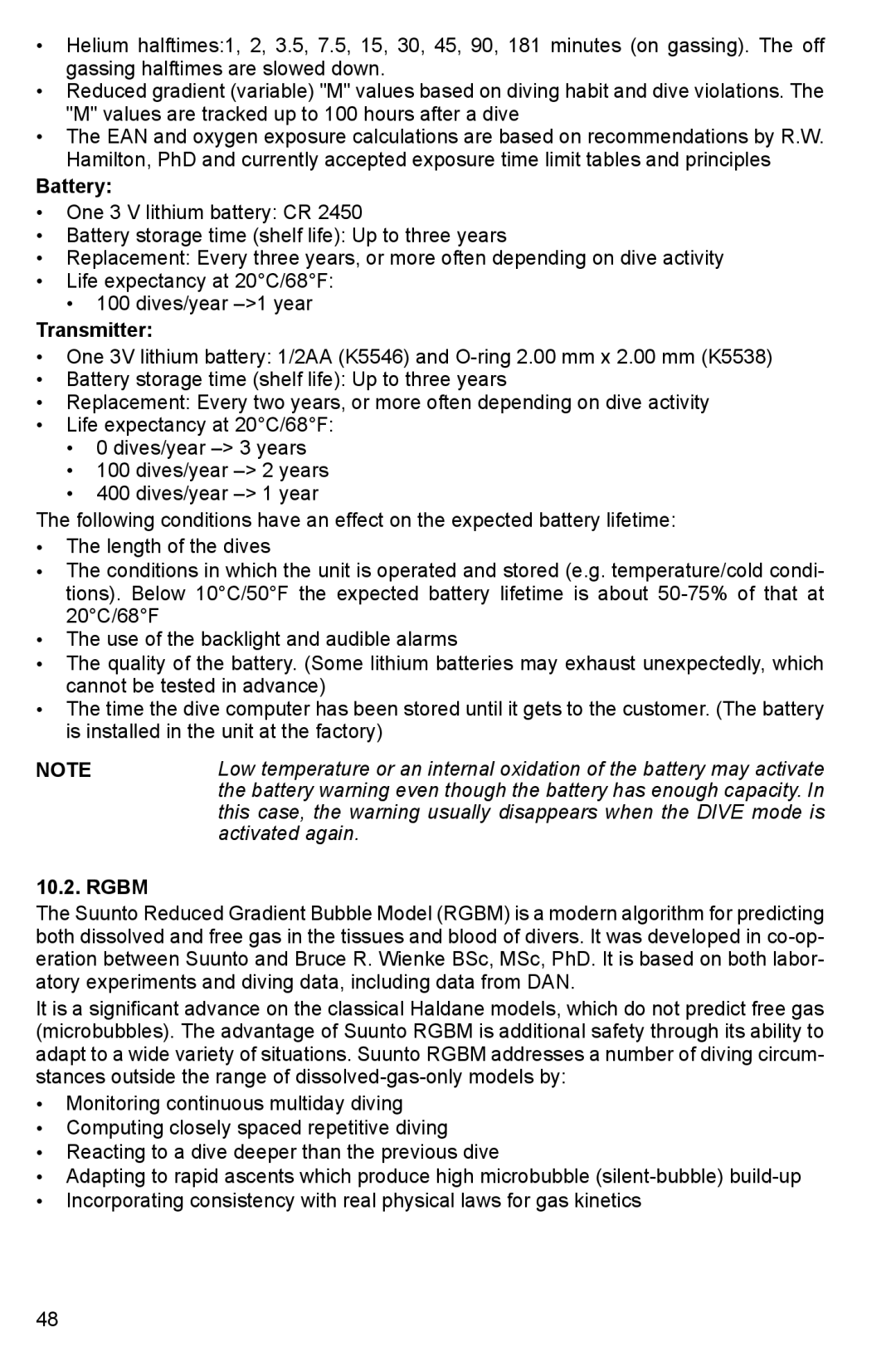•Helium halftimes:1, 2, 3.5, 7.5, 15, 30, 45, 90, 181 minutes (on gassing). The off gassing halftimes are slowed down.
•Reduced gradient (variable) "M" values based on diving habit and dive violations. The "M" values are tracked up to 100 hours after a dive
•The EAN and oxygen exposure calculations are based on recommendations by R.W. Hamilton, PhD and currently accepted exposure time limit tables and principles
Battery:
•One 3 V lithium battery: CR 2450
•Battery storage time (shelf life): Up to three years
•Replacement: Every three years, or more often depending on dive activity
•Life expectancy at 20°C/68°F:
• 100 dives/year
Transmitter:
•One 3V lithium battery: 1/2AA (K5546) and
•Battery storage time (shelf life): Up to three years
•Replacement: Every two years, or more often depending on dive activity
•Life expectancy at 20°C/68°F:
•0 dives/year
•100 dives/year
•400 dives/year
The following conditions have an effect on the expected battery lifetime:
•The length of the dives
•The conditions in which the unit is operated and stored (e.g. temperature/cold condi- tions). Below 10°C/50°F the expected battery lifetime is about
•The use of the backlight and audible alarms
•The quality of the battery. (Some lithium batteries may exhaust unexpectedly, which cannot be tested in advance)
•The time the dive computer has been stored until it gets to the customer. (The battery is installed in the unit at the factory)
NOTE
10.2. RGBM
Low temperature or an internal oxidation of the battery may activate the battery warning even though the battery has enough capacity. In this case, the warning usually disappears when the DIVE mode is activated again.
The Suunto Reduced Gradient Bubble Model (RGBM) is a modern algorithm for predicting both dissolved and free gas in the tissues and blood of divers. It was developed in
It is a significant advance on the classical Haldane models, which do not predict free gas (microbubbles). The advantage of Suunto RGBM is additional safety through its ability to adapt to a wide variety of situations. Suunto RGBM addresses a number of diving circum- stances outside the range of
•Monitoring continuous multiday diving
•Computing closely spaced repetitive diving
•Reacting to a dive deeper than the previous dive
•Adapting to rapid ascents which produce high microbubble
•Incorporating consistency with real physical laws for gas kinetics
48
